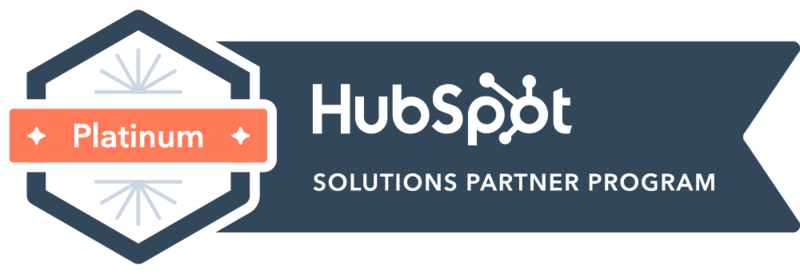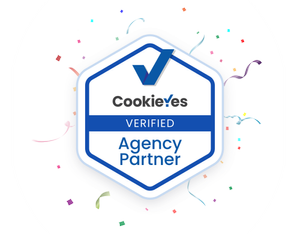What can you do to make your call to action (CTA) more clickable?
Are you targeting and nurturing leads with content that’s relevant and timely? Does your content clearly explain the value your brand can bring to their business?
If the answer is yes but you’re still struggling to convert leads into customers, it might be time to take a closer look at your CTAs.
What is a CTA?
A CTA prompts a user to take the next step in the journey. By encouraging customers to take a desired action, you’re encouraging them to move forward down the marketing funnel - from awareness to consideration and then conversion, as well as prompting them to take steps to strengthen their loyalty to your business and become brand advocates.
An effective CTA provides enough information in a very short space to let the user know what happens once they take action. This not only improves the user experience, but conversion rates too.
Some call to action examples might be:
Should I include more than one CTA?
Research has shown that having more than one CTA on a single email or webpage can hurt conversion rates. Giving time-pressured prospects more than one potential action can actually cause inaction. Users become unsure about which CTA to take, and end up clicking on no CTA at all.
However, there are times when it’s okay to bend the rules. Offering several CTAs can be a good move when you’re unsure how far a lead is through the marketing funnel. A primary CTA that moves your prospect forward, supported by a second CTA highlighting useful content to help nurture the lead, for example, can be effective.
As always, there’s never a single, ‘one-size-fits-all’ rule to these things - it’s best to test the variables and see which approach provides the best result for your customers.
How do I maximise CTA conversion rates?
There are three vital questions you need to ask when evaluating whether your marketing content will help drive new leads.
-
Relevance
Is the content being sent to them relevant and timely?
-
Value
Does the content clearly communicate the benefits of your proposition?
-
Action
Is it clear what next step the user needs to take, with a persuasive CTA?
All of these elements need to be working together to improve your conversion rates. But if the content you’re sending to customers is both relevant and valuable, then it’s often the third and final one - action - that you need to focus your efforts on.
So, how do I make my CTAs more impactful?
One recommendation is to always use the imperative mood. This is a verb form that expresses a command, and works particularly well for CTAs because it provides users with a clear direction for taking the next step.
A second good tip is to use strong verbs, which motivates users while adding energy to your copy.
Thirdly, don’t be vague - make sure your copy is explicit about what a user gets from taking action.
Examples of strong verbs in the imperative mood include:
-
Discover
-
Unlock
-
Explore
-
Secure
-
Enjoy
-
Boost
-
Maximise
-
Gain
-
Save
-
Instant
-
Claim
What else can I do to convince people to act?
Remember that second question I posed, about value and whether your content clearly communicates the benefits of your proposition? Another tactic to adopt is to always make sure your value message is located close to your CTA button.
This gives prospects that all-important reason to act, so it’s clear what’s in it for them.
Another tip is to create a sense of urgency whenever possible. Tap into a customer’s fear of potentially missing out, by using words like ‘now’ or ‘today’ to make sure they take advantage of an opportunity before it’s too late.
This can also be extended to making your leads feel special, with exclusive or time-limited offers. Can you provide them with a ‘complimentary’ report that will improve their knowledge on a trending industry topic? Or ‘exclusive’ access to a members-only area, which delivers value-added benefits for a limited period? These measures can often help boost CTA conversion rates.
Do you have any other CTA recommendations?
If you can instil emotion into your copy, then you’re onto a winner. B2B marketing can often feel more transactional, so brands that provide emotive content will really stand out. How about shining a spotlight on what your business can do to help make a prospect’s life easier? Or inspire them to take positive steps towards a more sustainable future? These more emotive angles can reap real rewards when it comes to click-through rates.
It also pays to personalise copy as much as possible. One tip is to speak to customers directly in the second-person voice, making sure content is focused on the needs of your audience.
It can also be worth trialling a first-person point of view on CTA buttons. Phrases like ‘I’m excited to learn more’ or ‘I’m ready to sign-up’ instantly place your user in the story you’re telling.
Don’t underestimate how important it is to inject some enthusiasm into what you’re talking about, too. Whether it’s an event or a training session, if you can’t get excited about what you’re offering, then why should your customers?
Finally, use figures and statistics to help provide further evidence of why someone should click on a CTA. Specific stats - such as ‘11,046 subscribers’, rather than ‘over 10,000 subscribers’ - often feel more trustworthy than generic ones, helping to demonstrate the undisputed value you can bring.
By taking these steps for stronger CTAs, you can secure more leads and boost your business.
To help get you started, we’ve created a ‘CTA cheat sheet’, packed full of powerful and persuasive words and terms that you can use to encourage action.






 James Montgomery
James Montgomery
 Raven Wheatley-Hawkins
Raven Wheatley-Hawkins
 William Tomaney
William Tomaney
 Alexander Costello
Alexander Costello






.png)


